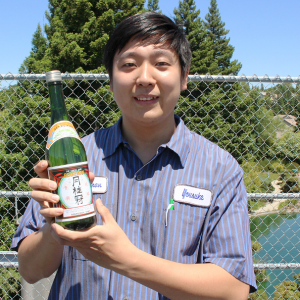
Gekkeikan Sake – At Home in California
Jun. 29. 2018 writer
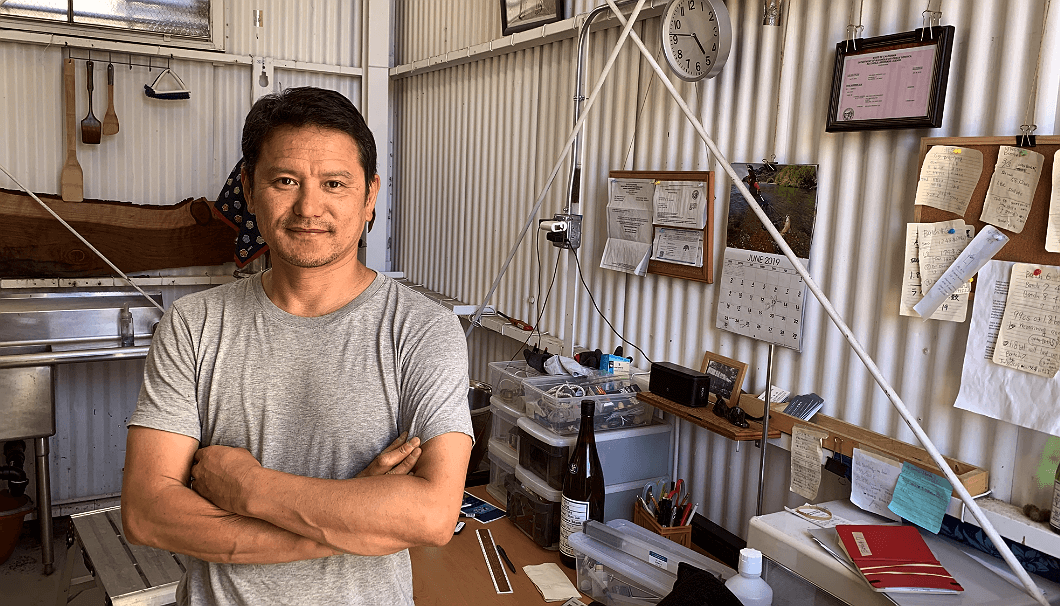

Yoshihiro Sako bootstrapped his way to creating Den Sake, one of California’s premier small-batch sake breweries
Day in and day out, Yoshiro Sako toils in his makeshift brewery in Oakland, California, producing about 2,200 bottles of Den Sake every two months or so. Sake brewing isn’t exactly commonplace in the US, so faced with the costs of importing equipment from Japan, Sako’s instead made a novel choice: Jerryrigging his own brewing gear.
Much of the equipment is handmade by local artisans with materials carefully chosen to both produce and avoid certain effects on Den Sake’s flavors. The more heavy-duty tools were repurposed from equipment designed for other industries, like tanks originally made for winemaking and a Chinese restaurant’s steamer for efficiently making koji.
“It took a long time just to find a plastic bucket with the right material that wouldn’t affect the flavor,” Sako tells SAKETIMES.
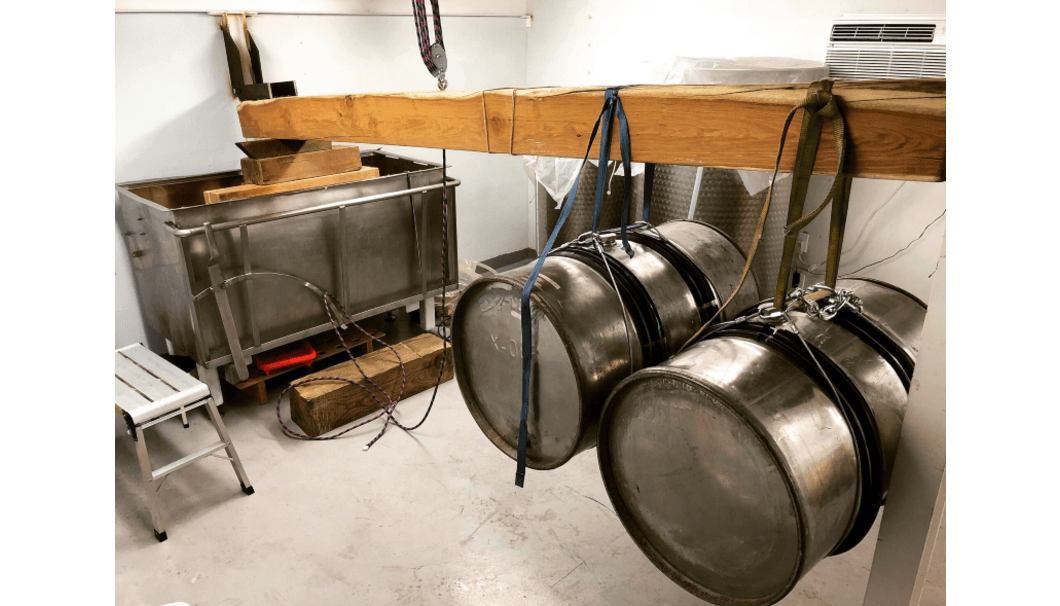 Pressing is done in the old-fashioned style of fuenshibori , in which the fermented rice is pressed in a large tub by a wooden beam carefully weighted with barrels of water.
Pressing is done in the old-fashioned style of fuenshibori , in which the fermented rice is pressed in a large tub by a wooden beam carefully weighted with barrels of water.
In the end, this hodgepodge somehow became a functioning sake brewery that’s not only managed to stay in business, but even thrive among sake and wine drinkers in the local area, earning Den Sake a nomination for the James Beard Award – one of the highest food service awards in the US – less than a year after the first batch of Den Sake rolled out.
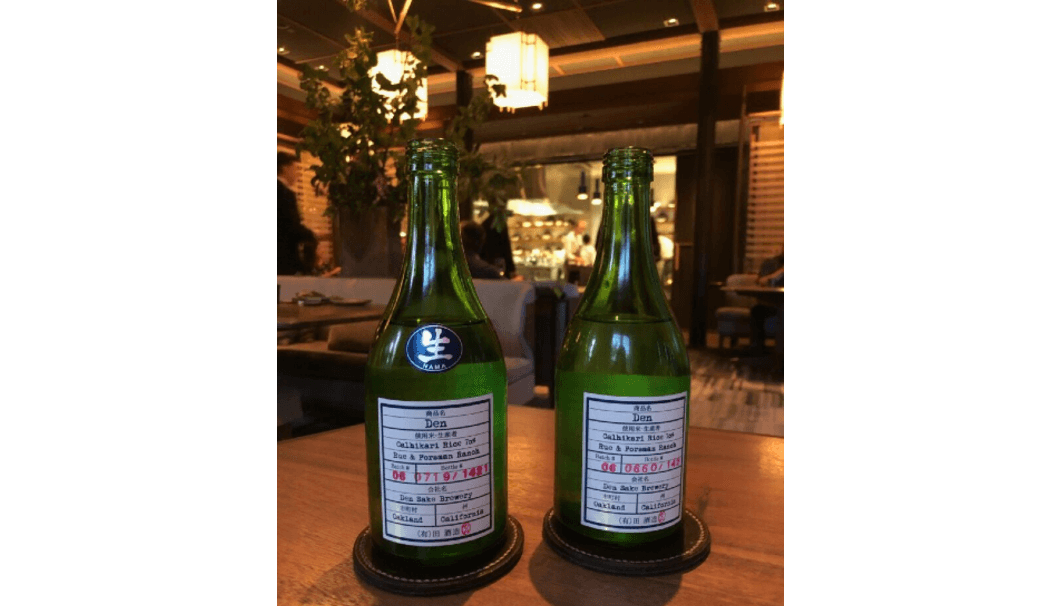 Den Sake is available in both unpasteurized and single-pasteurized varieties
Den Sake is available in both unpasteurized and single-pasteurized varieties
As a young man in Japan, it was music that attracted Sako to the US. As a working musician in his home country, he developed a wide range of interests from working side jobs. But all that time, sake hadn’t been one of them.
Eventually, Sako decided to spend some time backpacking the States, winding up with a decade-long music career there. At that point, the owner of a cafe, where Sako was working part-time, offered him a management position at a new bar and liquor shop cafe owner were about to open.
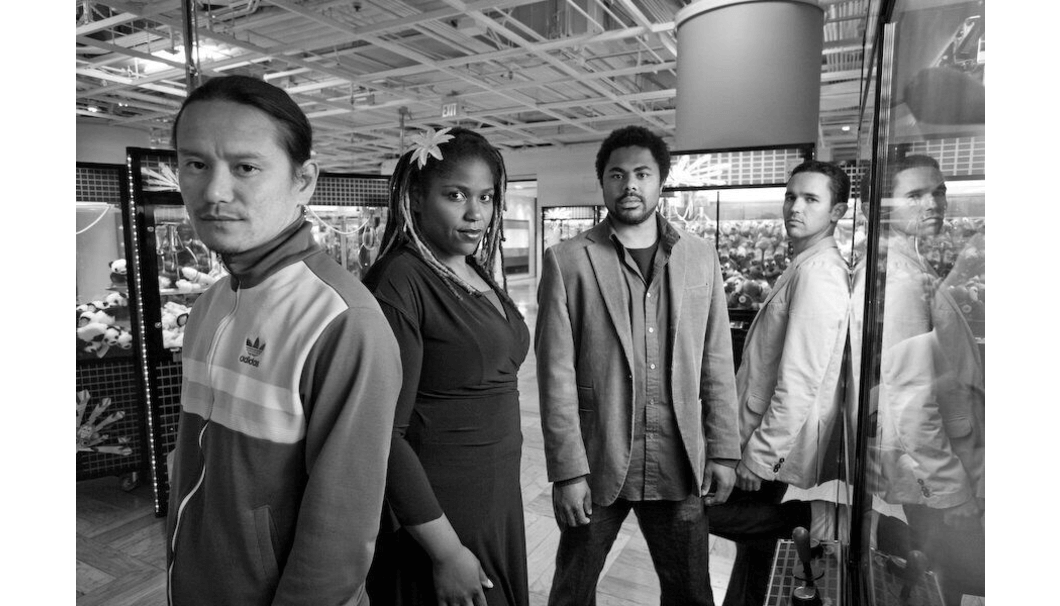 Sako and Live electronica band Beatropolis
Sako and Live electronica band Beatropolis
Sako initially declined so he could to focus on his music, but when a second opportunity arose Sako took the plunge.
The establishment Sako found himself in charge of dealt in both wine and sake. Sako first set about learning about wine, as it was by far the most popular drink in the US. Still, given Sako’s Japanese heritage and position as manager, he found customers inquiring more about sake than wine. This kicked off Sako’s interest in sake, leaning into the beverage to serve his customers better.
And the rest, as they say, is history. What started as a work obligation grew into a full-blown passion, and Sako returned to Japan for a period of time to work in a sake brewery and learn more about how it’s made, with the aim of sharing this knowledge in the stateside. He then went back to America and began teaching courses on sake brewing. This eventually led to a seven-year stint as a sommelier in San Francisco, where he refined his sense of sake pairing.
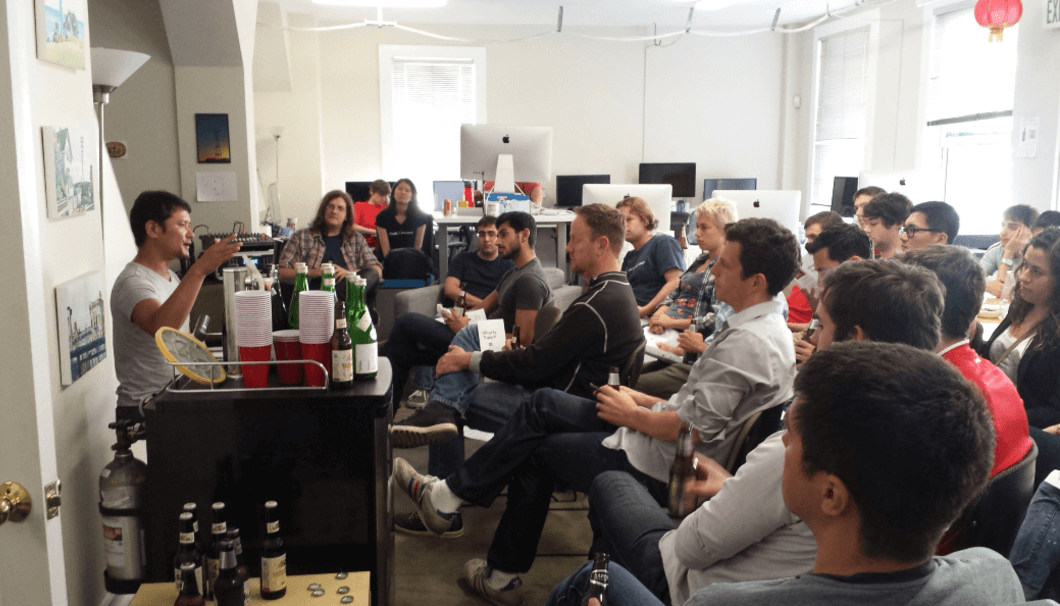 Sako teaching a course on sake brewing
Sako teaching a course on sake brewing
Working and studying in sake, the idea of sharing sake with Americans grew. “I had a strong desire to teach the culture of my home to the USA,” says Sako. “While in Japan I was greatly influenced by American music and movies. Americans don’t know as much about Japanese culture, so I want to even it out a bit.”
Having already done so much in the sake world in California, the only thing more he could possibly do to achieve his goal was, well, start brewing.
And Sako was up to the challenge.
Sako had already acquired the knowledge to brew sake from his time at Shiokawa Brewery in Niigata Prefecture. The environment of California, though, was very different and as a result so were the key ingredients of water and rice. Water absorption rates for rice that were considered the standard in Japan were suddenly meaningless for California-based Sako. So, he had to figure it all out from scratch, through trial and error.
In a friend’s backyard, Sako set up a tent with an electric heater for propagating koji and some sheds to use as a walk-in cooler and tank room. Successfully making sake with American ingredients was only part of the challenge, though. Sako also wanted to make a new type of sake that was designed to pair with American food.
“Acidity is most important,” Sako says. “But not to imitate the qualities of wine. The point is to consider the types of food eaten in America. Acids help to cut through the oils of foods high in fat and protein. However, it’s not just a more sour sake than that of Japan that I’m making, it’s an overall bolder sake.”
When Sako first started brewing, he bounced ideas back and forth with a fellow San Francisco-based sake maker, Sequoia Sake. His mentor from Shiokawa Brewery also visited to help him develop key steps towards the first marketable batch of Den Sake.
But by this time, San Francisco, the originally planned home base for Den Sake, had become far too expensive even to live in, let alone bootstrap a one-man brewery in. So, Sako looked elsewhere.
Another invaluable friend Sako had made over the years was Paul Discoe, an expert in Japanese Buddhist architecture and builder of Zen Buddhist Temples who works out of Oakland, California. Discoe helped Sako find some space in the O2 Artisans Aggregate in an eco-industrial park in Oakland. It was only about 74 square meters (800 square feet), but it was enough for Sako to make a start.
Discoe also put Sako in touch with the local artists and builders who could help create the specific tools he needed to produce. Although far from perfect, there was a great sense of community surrounding the start of what was to be called Den Sake – a name derived from the kanji character in the Japanese word for “rice paddy,” that’s also simple enough for English speakers to remember.
By March 2018, Sako had his commercial license sorted out and in August of the same year the first official batch of Den Sake rolled out.
When first encountering a bottle of Den Sake its label certainly jumps out as different from traditional Japanese sake bottles, known for their classical designs and sometimes esoteric kanji characters. In contrast, Den sake’s design looks more like the label of an old-school medicine bottle.
“I wasn’t really sure what I wanted to do about the label. I was looking online and wanted to find something simple but unique,” recalls Sako. There’s a certain roughness to the design that draws from Sako’s musical background, and it also clearly distinguishes Den as unlike traditional Japanese sake.
“There’s a growing sense of a ‘terroir’ in the sake industry in Japan,” Sako points out. “Until recently sake was defined by the technique of making it rather than the ingredients like wine is.”
Den’s label reflects that trend as well. Rather than defining the sake as a “junmai,” Sako puts the emphasis on the source of the rice: Rue & Forsman Ranch. It’s a subtle move to push the notion of a unique Oakland terroir.
Getting rice from a single source was a challenge, though. In the US, rice is often all gathered from multiple farms and then mixed together, making it impossible to know the origin of a particular grain. Sako had to search around to find a rice producer he could buy from directly at a reasonable price. It was important to Sako to ensure that each bottle of Den Sake used 100% Calhikari rice from the Sacramento Valley.
It just so happens that this devotion to homegrown ingredients plays well with Californian consumers, known for their sometimes eccentric commitment to buying local. This, combined with Den Sake’s American-oriented flavors and Sako’s established network of respected sake vendors and restaurants, has helped to make the brand an instant hit.
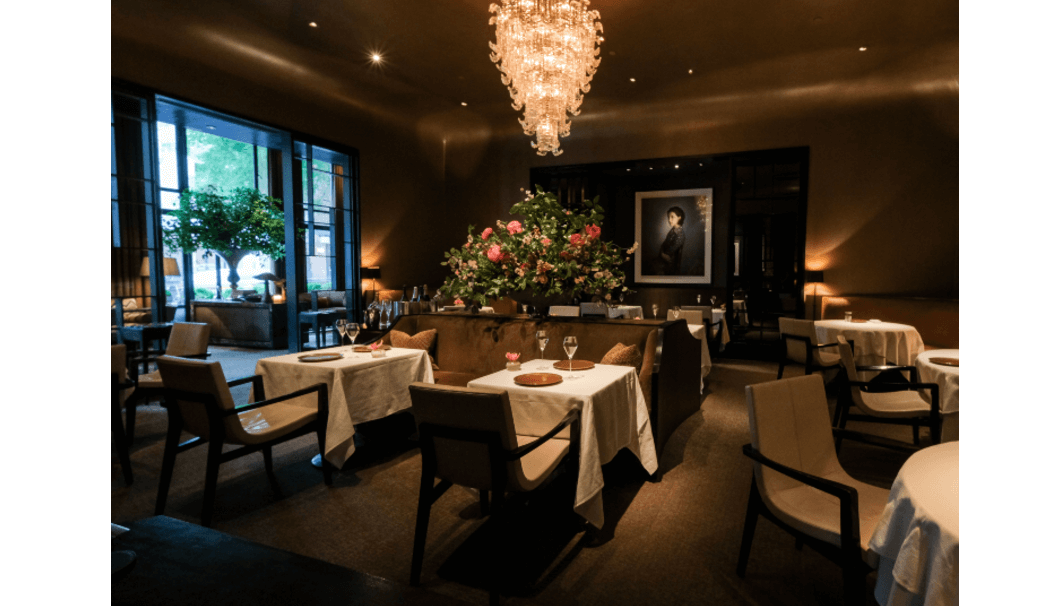 The Michelin 3-Star Restaurants Quince (pictured) and Single Thread are some of the places stocking Den Sake
The Michelin 3-Star Restaurants Quince (pictured) and Single Thread are some of the places stocking Den Sake
Despite its early success, there is still much to be done. Sako is still the sole worker at Den Sake Brewery, which is something he understandably wants to change in the near future. The time will also come for him to forsake his charmingly rustic DIY brewery for something that can ensure a more stable production and even allow him to expand on the brand.
Den Sake itself is still being perfected and fine-tuned in what Sako calls “messy but fun” work that rewards him with the joy of turning more and more Americans on to sake.
The USA presents a new horizon for sake. As Sako puts it, “In Japan, everyone knows what sake is ‘supposed to be,’ but in America, few people are that familiar with it – so I can try new things and be adventurous.”
Where that adventure will lead is anyone’s guess, but it’s certainly a bright start for Sako, Den, and sake in America.
Comments